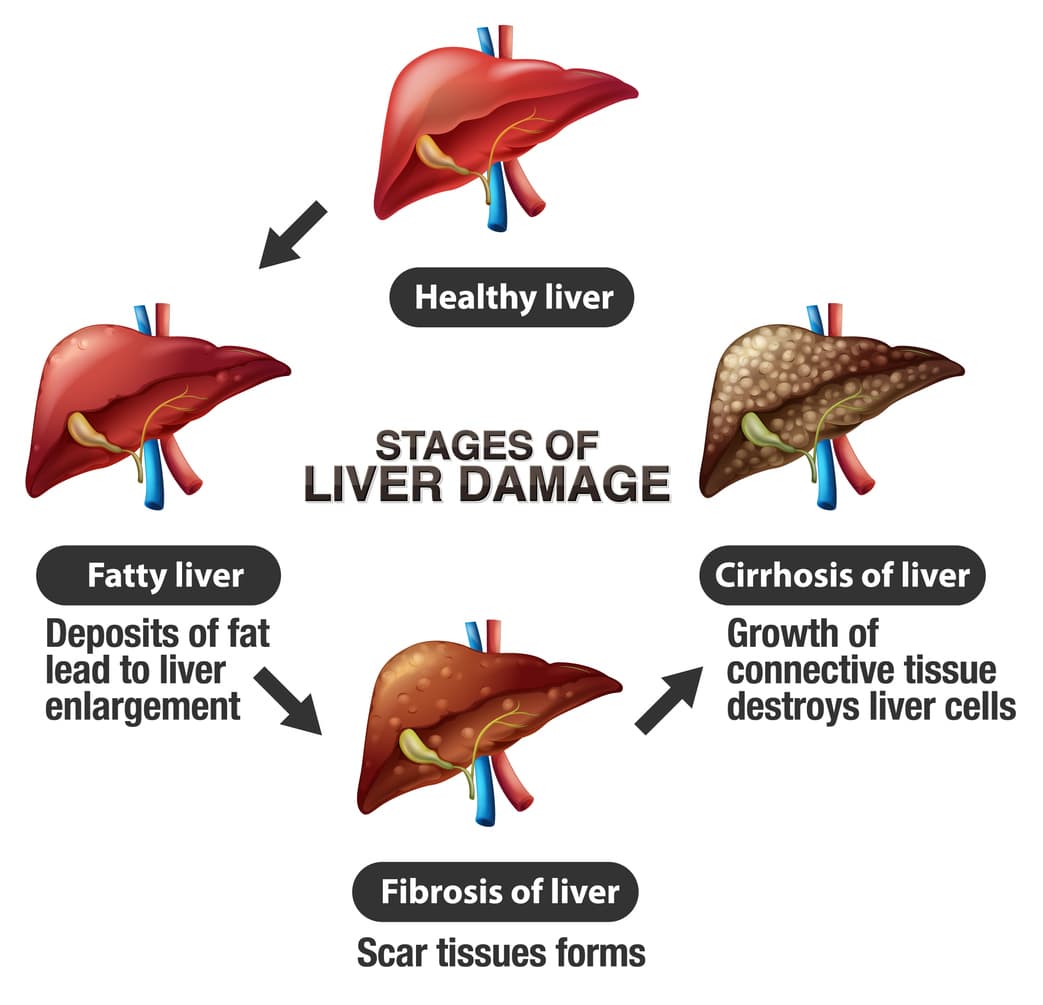
The Silent Symptoms of Liver Disease You Shouldn’t Ignore
Liver disease can manifest silently, often without obvious warning signs, until it progresses to a more advanced stage. Your liver plays a vital role in detoxification, metabolism, and digestion, making early detection of liver disease essential for effective treatment. Many symptoms, such as fatigue or abdominal discomfort, can be mistaken for other common ailments, leading to delayed diagnosis. Recognizing these subtle signs can be challenging but crucial in identifying potential liver issues before they escalate.
Understanding the Liver and Its Function
The liver is a remarkable organ responsible for many crucial functions that keep our body running properly. Located in the upper right quadrant of the abdomen, just below the diaphragm, this powerhouse organ is responsible for:
- Detoxification: The liver is the primary organ responsible for breaking down and eliminating toxins, drugs, and other harmful substances from the body.
- Metabolism: It plays a vital role in metabolizing carbohydrates, proteins, and fats, ensuring the efficient utilization of nutrients.
- Bile Production: The liver produces bile, a fluid that aids in the digestion and absorption of fats.
- Blood Clotting: It synthesizes the proteins necessary for proper blood clotting, preventing excessive bleeding.
- Hormone Regulation: It helps regulate the production and breakdown of hormones, maintaining hormonal balance in the body.

Understanding Types of Liver Damage
Several factors can disrupt the liver’s regular operation, leading to the development of liver disease. Liver diseases can be broadly classified into two categories: acute and chronic. Acute liver diseases develop suddenly and often resolve with appropriate treatment, while chronic liver diseases persist over an extended period, gradually causing irreversible damage. Common types of liver damage include:
- Hepatitis: Hepatitis encompasses various forms, including viral types (such as hepatitis A, B, C, D, and E), caused by viral infections affecting the liver.
- Alcoholic Fatty Liver: Caused by excessive alcohol consumption, it is the earliest stage of alcoholic liver disease and can progress to alcoholic hepatitis and cirrhosis if drinking continues.
- Nonalcoholic Fatty Liver (NAFL): This is typically associated with metabolic syndrome, obesity, and insulin resistance. It can progress to nonalcoholic steatohepatitis (NASH) and eventually lead to fibrosis, cirrhosis, and liver cancer.
- Cirrhosis: Cirrhosis results from long-term liver damage and is characterized by extensive scar tissue that replaces healthy liver tissue. Chronic hepatitis B or C infections, alcohol abuse, or other chronic liver diseases often cause it.
10 Silent Signs of Liver Disease
Silent symptoms of liver disease refer to subtle or less obvious signs that can indicate liver damage or dysfunction. These symptoms may not be immediately noticeable or may be attributed to other health conditions. Some silent symptoms include:
- Fatigue: Persistent tiredness and lack of energy are common in liver disease due to the liver’s role in energy metabolism and nutrient storage. Fatigue can be chronic and may worsen as liver function declines.
- Generalized Itching: Itching all over the body (pruritus) can be caused by bile salts accumulating in the skin due to impaired liver function, leading to irritation and discomfort.
- Digestive Issues: Mild symptoms such as bloating, gas, or discomfort after eating can occur as liver disease progresses, affecting digestion and nutrient absorption.
- Unexplained Weight Loss: Losing weight without trying can occur due to altered metabolism and decreased appetite associated with liver disease, leading to unintentional weight loss.
- Bruising: Easy bruising or prolonged bleeding from minor injuries can occur due to impaired blood clotting factors produced by the liver, increasing susceptibility to bruising and bleeding.
- Changes in Urine or Stool Color: Subtle changes in urine color (dark yellow or brown) or stool color (pale or clay-colored) can indicate problems with bile production or flow, which are functions performed by the liver.
- Skin Changes: Small changes in skin appearance, such as slight yellowing (jaundice) or darkening, can occur due to the buildup of bilirubin in the blood, indicating liver dysfunction.
- Swelling: Mild swelling in the abdomen or the legs and ankles can occur as liver function declines, causing fluid retention due to decreased protein production by the liver.
- Mental Changes: Mild cognitive impairment, difficulty concentrating, or memory problems may develop in advanced liver disease due to elevated ammonia levels affecting brain function.
- Joint Pain: Aches or stiffness in the joints may be related to inflammation associated with certain types of liver disease, such as autoimmune hepatitis or hepatitis B and C.

Risk Factors for Developing Liver Disease
Several risk factors increase the likelihood of developing liver disease. Chronic alcohol consumption is a leading cause, as excessive drinking over time can lead to alcoholic liver disease, ranging from fatty liver to cirrhosis. Viral infections such as hepatitis B and C are significant risk factors, as these viruses can cause chronic liver inflammation and lead to long-term liver damage if untreated.
Nonalcoholic fatty liver disease (NAFLD) is linked to metabolic conditions like obesity, insulin resistance, and type 2 diabetes. Certain medications and toxins, including some prescription drugs and environmental pollutants, can also damage the liver. Genetic factors, autoimmune diseases, and certain metabolic disorders increase susceptibility to liver disease. Individuals with these risk factors need to undergo regular screenings and make lifestyle changes to lower their risk of developing liver disease.
Diagnosing Liver Disease
Diagnosing liver disease involves a thorough process that begins with reviewing the patient’s medical history, conducting a physical examination, and performing various diagnostic tests. During the physical examination, signs such as jaundice, abdominal swelling, or itching may be observed.
Blood tests might be used to assess liver function by measuring levels of enzymes, bilirubin, and proteins. Imaging techniques such as ultrasound, Magnetic Resonance Imaging (MRI), or Computed Tomography (CT) provide detailed liver images to detect abnormalities like tumors or cirrhosis. Sometimes, a liver biopsy is necessary to confirm the type and extent of liver damage by examining a small tissue sample under a microscope. Integrating these diagnostic methods allows your gastroenterologist to accurately diagnose liver disease and tailor effective treatment plans.
Take Charge of Your Liver Health
The silent nature of liver disease underscores the importance of raising awareness to prioritize the health of your organ. By understanding the subtle signs of liver dysfunction and the risk factors, you can take proactive steps to safeguard your liver health and prevent the progression of liver-related conditions. Whether recognizing symptoms early or seeking a diagnostic evaluation, staying informed and proactive is crucial in maintaining liver health.
If you or someone you know has symptoms or risks associated with liver disease, seeking timely medical advice and care is essential. At Gastroenterology of Greater Orlando, our team provides compassionate care and advanced treatment options tailored to each patient’s needs. Start your journey to improved liver health by contacting our specialists today.